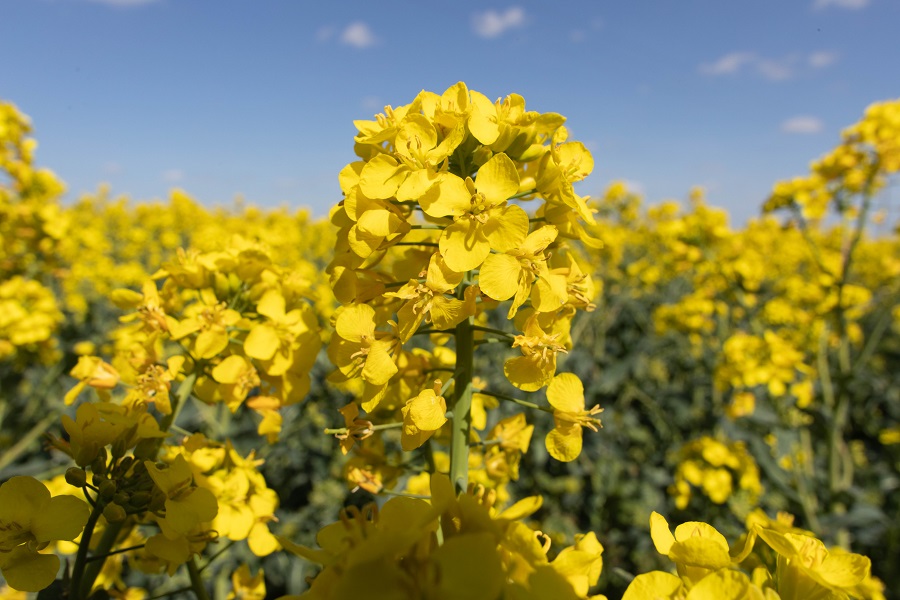With oilseed rape about to enter its critical flowering period, AHDB has announced it will run its sclerotinia infection risk alerts service again this season to help growers better target sprays. Charlotte Cunningham reports.
Based on observed and forecast weather data, the sclerotinia alerts flag potential infection risk periods and can help focus in-field monitoring.
The web page also features inoculum-pressure data from a limited network of spore traps and provides information on crop growth stages.
AHDB has also issued the spring update of the light leaf spot forecast, as well as predictive information on aphid activity (first flights and abundance).
Catherine Harries, who manages disease research at AHDB, said: “In 2020, our analysis showed that the sclerotinia forecasts were around 96% accurate, with only around 2% false negatives.
“Forecasts are never perfect, but we are encouraged by the results. Information on the presence of spores, weather and crop growth stage can really help target sclerotinia sprays.”
Recent AHDB-funded research found that decisions based on sclerotinia inoculum levels and weather-based infection risk resulted in 26% fewer crops needing treatment.
Typically, the optimum time for a single spray is just before mid-flowering on the main raceme and, since fungicides have protectant activity, should be applied prior to an infection risk alert. Persistence of full-dose fungicides is approximately three weeks. If a spray is made earlier, or if the flowering period is extended, a second spray may be required under conducive infection conditions.
Access the sclerotinia infection risk alerts during the main flowering period via: ahdb.org.uk/sclerotinia
LLS and aphid forecasts
AHDB’s updated LLS forecast shows large jumps in OSR disease risk, following a relatively wet winter. This tallies with field reports, where LLS infection is most evident on susceptible varieties. The increase in risk (compared with the autumn preliminary forecast) is generally larger at locations further away from the South-East of England.
With Jan–Feb air temperatures below the 30-year average, aphids are anticipated to take flight a little later than average this spring. The annually updated forecasts, produced by the Rothamsted Research Insect Survey, predict that aphids will fly about 2–3 weeks later in Scotland and northern England and up to one week later than average over much of the rest of England.




